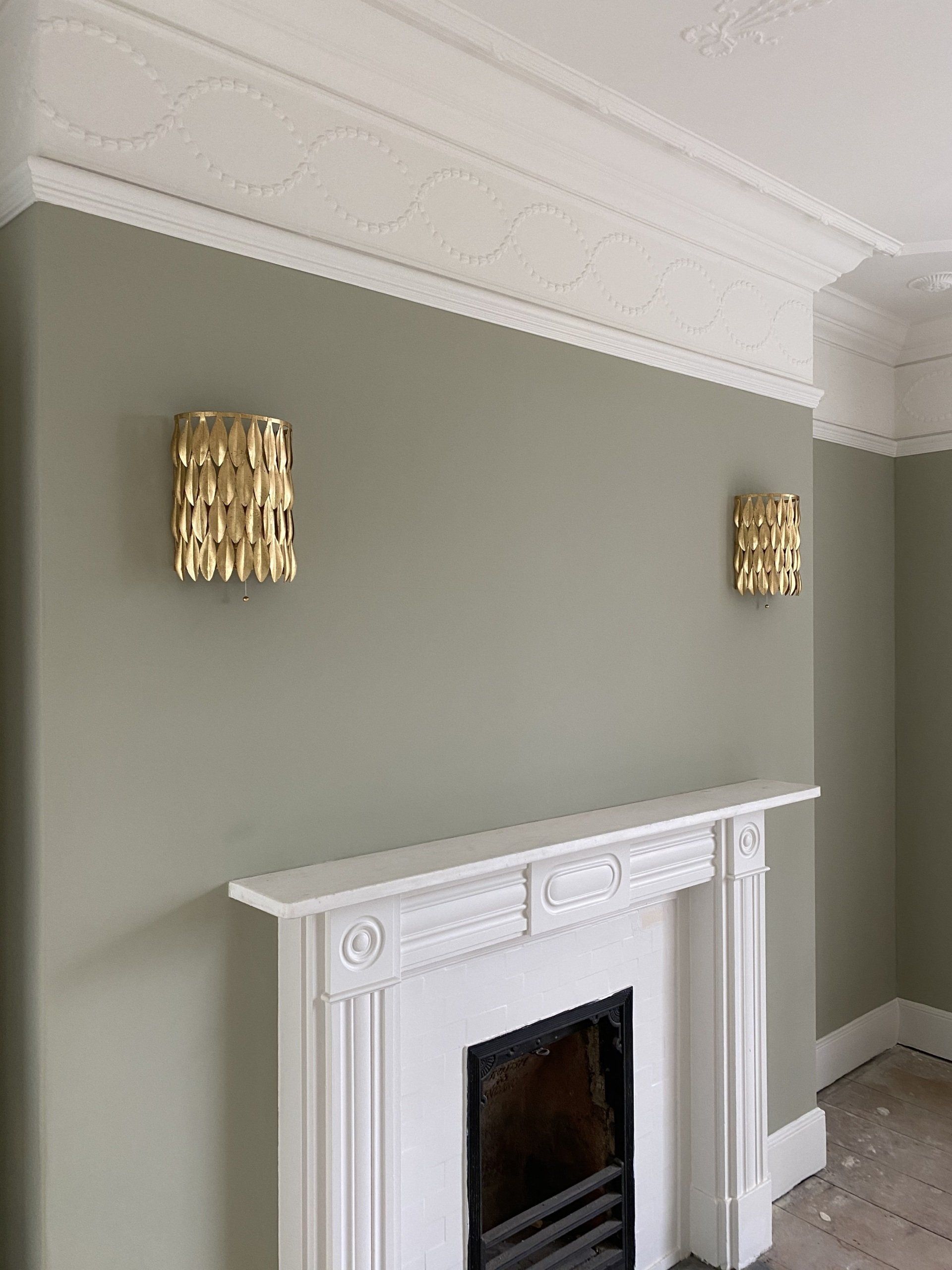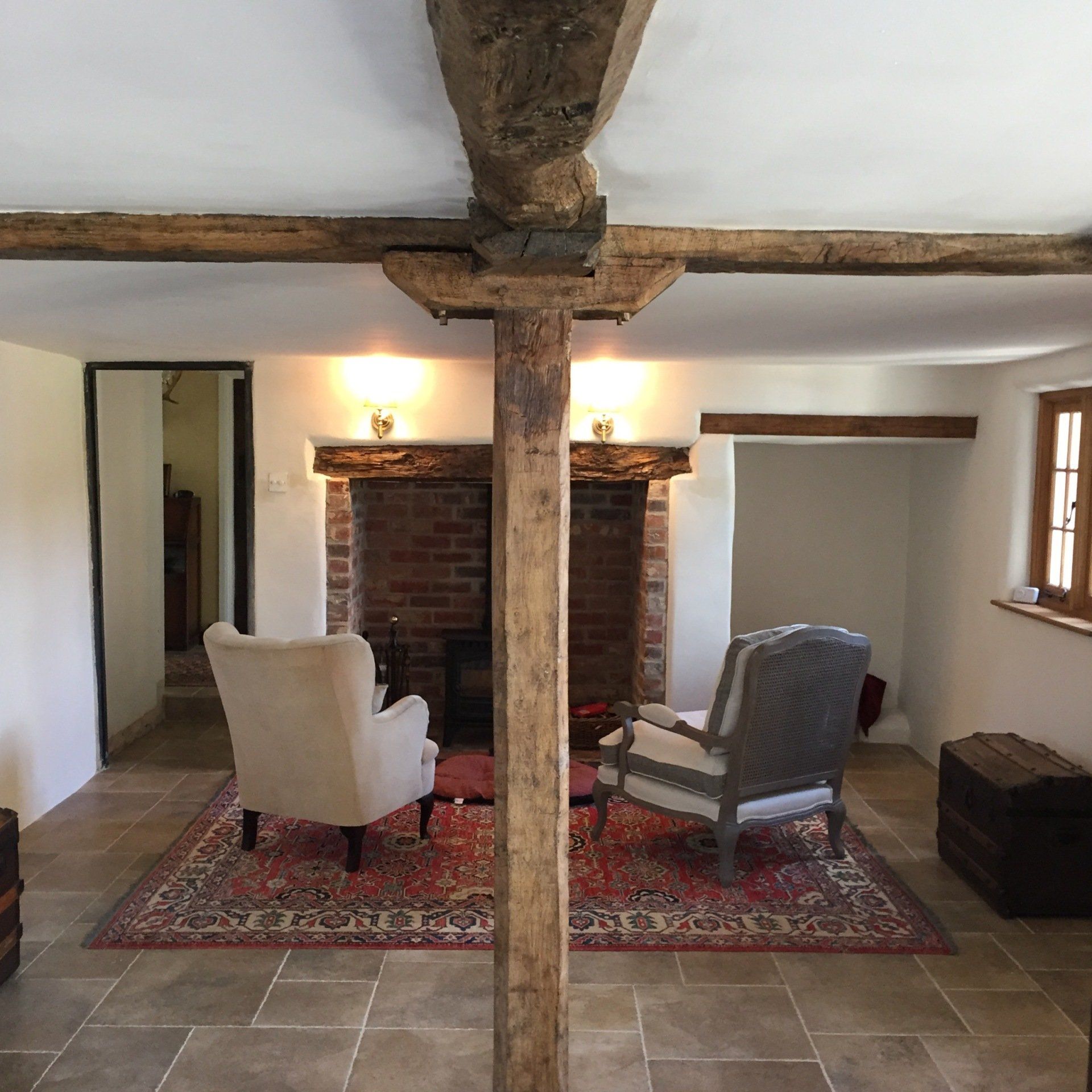Ceilings in the UK have been covered with lath and plaster since at least the late 15th century. Prior to this most house holds had a fire in the middle of the floor.
Plaster is applied over various bases. The type used is, in many cases, dictated by custom in the area, type of work being done, or cost. Over the years there have been many changes and developments in the materials used as the base for plaster.
Thin sticks and reeds were used by primitive man as the base for coats of mud to enclose his hut. The Romans used reeds for much of their plastering work. Gradually this type of lath evolved into the wood lath that remained popular for many centuries. Wood was plentiful everywhere and it was a simple process to split straight grained lengths of logs by hand into strips called riven lath (split lath) because the split occurred with the grain of the wood.
Good quality laths. Riven laths are best, they must be well nailed and joints staggered preferably every 12 laths. Gaps should be around 7mm to allow for a good key to form through the gap.
A ‘pricking-up’ coat of lime putty and sand or earth mortars was applied and pushed through the lath to form nibs or keys. This coat was typically 5-15mm thick. The nibs act as a mechanical key which helps the mortar to adhere to the lath.
The second (‘floating’ or ‘straightening’) coat uses one part lime putty to three parts sand to a thickness of 10-15mm thick. The second coat is ruled flat and scoured using a wooden float to consolidate the surface.
The finishing coat was one part lime putty to one part fine sand or two parts lime putty to three parts fine sand to a thickness of 2-5mm and finished with steel trowel and brush.










